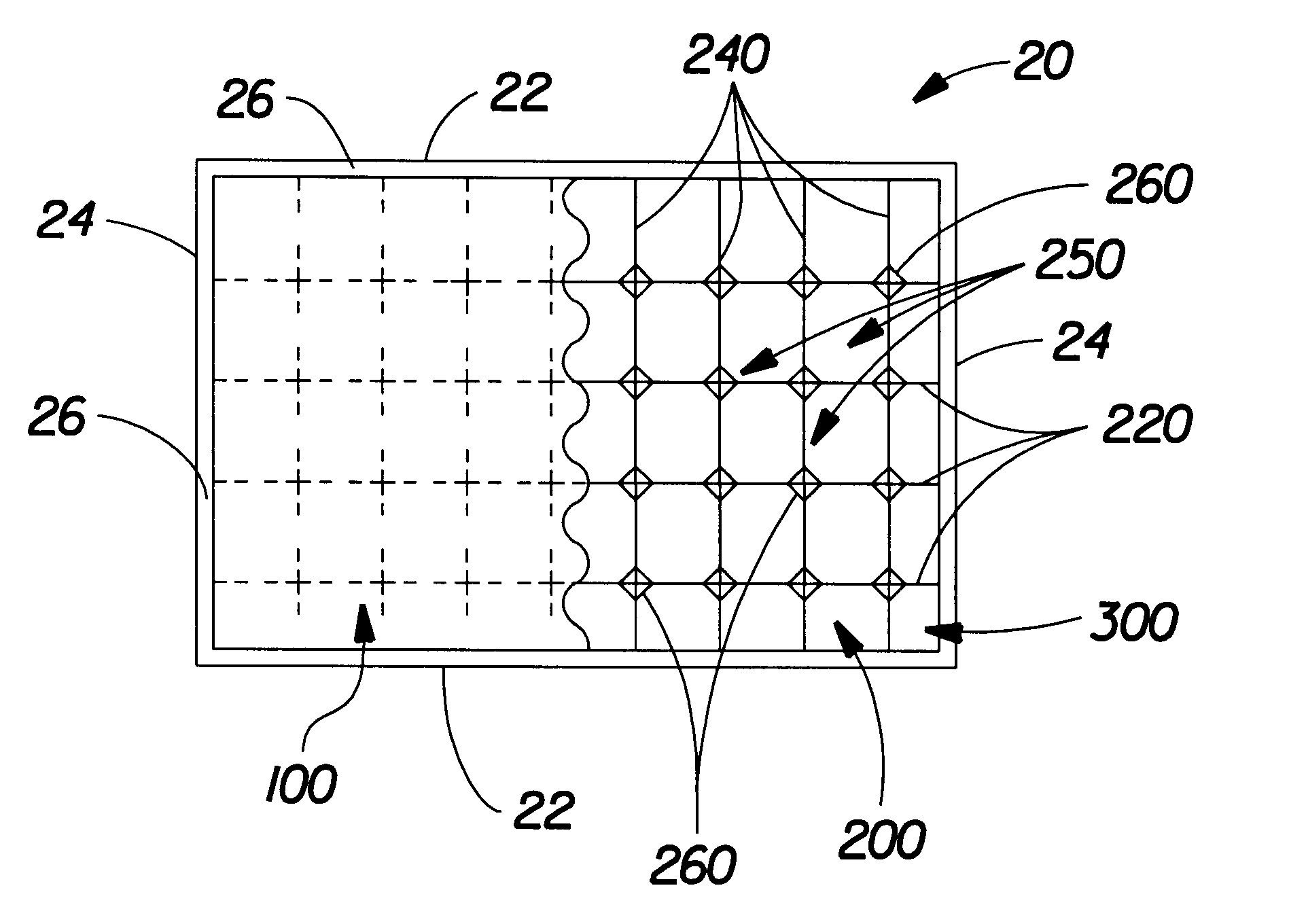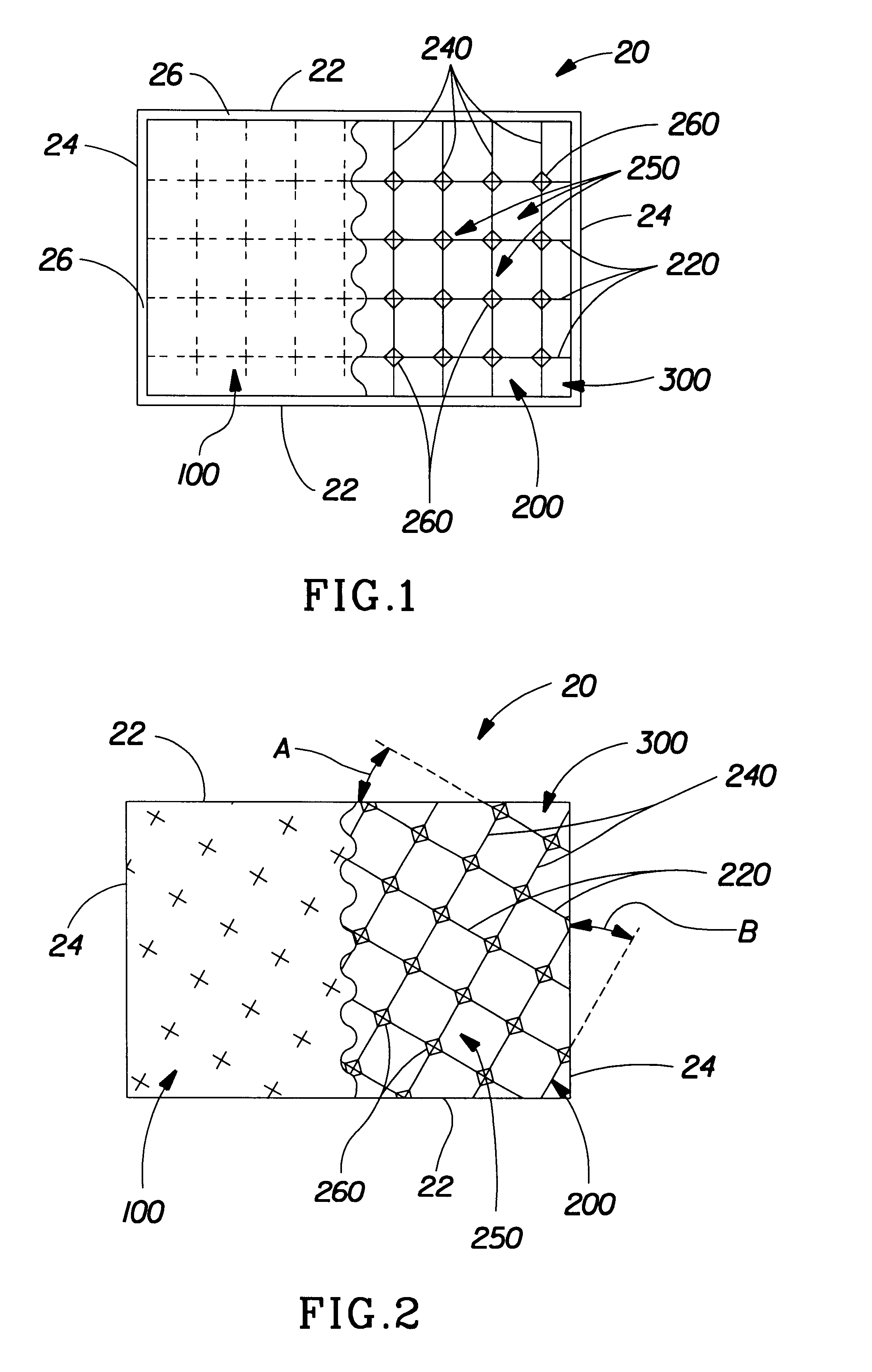Structures useful as cleaning sheets
a technology of structure and cleaning sheet, applied in the field of cleaning sheet, can solve the problems of adversely affecting the ability of materials to pick up and retain particulate dirt, and the material is not particularly suitable for collecting and entrapping soil
- Summary
- Abstract
- Description
- Claims
- Application Information
AI Technical Summary
Benefits of technology
Problems solved by technology
Method used
Image
Examples
example 1
This example illustrates the combination of carded webs and a scrim (i.e., a net of polypropylene filament) to make a cleaning sheet of the present invention. Two carded polyester fiber webs with a scrim in between is prepared. The combination of the two carded webs and the scrim are then placed on top of an apertured forming belt (23C square weave available from Albany International, Engineered Fabrics Division, Appleton, Wis.) and are hydroentangled and dried. The water entangling process causes the fibers to become intertangled and to also become intertangled with the scrim, while causing the fibers to move apart and provide two distinct basis weight regions. During the drying process, the hydroentangled sheet becomes "quilted" (i.e., greater three dimensionality is achieved) as a result of shrinkage of the polypropylene scrim relative to the polyester nonwoven. This material is designated as Example 1 in Table 1 and Table 2.
As a preferred optional step, the nonwoven sheet is sur...
example 2
This example illustrates the hydroentanglement of two layers of carded fibers (polyester), wherein no scrim material is positioned between the two fibrous layers. The fabric belt and both hydroentangling and drying conditions are similar to Example 1. This material is designated as Example 2 in Table 1.
example 3
A cleaning sheet according to the present invention includes a first layer 100, a second layer 200, and a third layer 300. The first layer 100 and the third layer 300 each comprise a hydroentangled web of polyester fibers having a basis weight of about 30 grams per square meter. The second layer comprises the above described THERMANET.RTM. brand reinforcing netting having a polypropylene / EVA resin, 2 sided adhesive, and a filament count of 3 filaments per inch by 2 filaments per inch prior to contraction of the second layer. The second layer 200 is positioned between the first layer 100 and the third layer 300 in a BASIX B400 hand press. The three layers are joined by pressing in the hand press at a temperature setting of about 330.degree. F. for about 13 seconds.
PUM
| Property | Measurement | Unit |
|---|---|---|
| Peak to Peak Distance | aaaaa | aaaaa |
| Height | aaaaa | aaaaa |
| Average Height | aaaaa | aaaaa |
Abstract
Description
Claims
Application Information
 Login to View More
Login to View More - R&D
- Intellectual Property
- Life Sciences
- Materials
- Tech Scout
- Unparalleled Data Quality
- Higher Quality Content
- 60% Fewer Hallucinations
Browse by: Latest US Patents, China's latest patents, Technical Efficacy Thesaurus, Application Domain, Technology Topic, Popular Technical Reports.
© 2025 PatSnap. All rights reserved.Legal|Privacy policy|Modern Slavery Act Transparency Statement|Sitemap|About US| Contact US: help@patsnap.com



